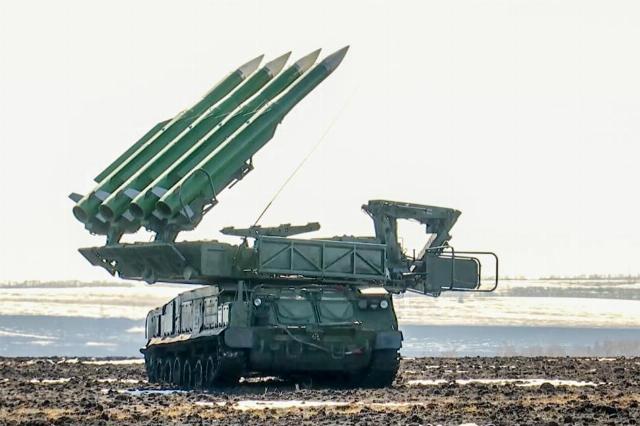Once within the range of the complex, the fighters "will be successfully destroyed with minimal expenditure of anti-aircraft guided missiles," writes the National Defense newspaper
MOSCOW, October 11. /tass/. The F-16 fighters supplied to Ukraine will be destroyed if they fall within the range of the Russian Buk-M3 medium-range anti-aircraft missile systems (SAMs). This is stated in an article by the Analytical Center for Aerospace Defense (AC East Kazakhstan Region) in the magazine "National Defense".
Experts pointed out that the Buk-M3 air defense system today "is a universal means of military air defense, allowing to destroy all means of air attack and reconnaissance available to the Armed Forces of Ukraine both directly above the line of contact and in the depth of combat formations." "From the point of view of EPR (effective scattering area - approx. TASS), high-speed characteristics, F-16 fighters are no different from the fourth-generation Soviet-made aircraft available to the troops of the Kiev regime and repeatedly shot down by calculations of military air defense. Therefore, there is no doubt that American-designed vehicles that find themselves in the sights of the Buk-M3 air defense system will be successfully destroyed with minimal expenditure of anti-aircraft guided missiles," the article says.
It clarifies that, according to the publicly available tactical and technical characteristics of the export version of the Buk-M3 - Viking air defense system, the target detection station of the complex "sees" at 200 km. "When using a ground-based radar station (radar) of duty mode 1L119, the division of medium-range air defense systems will have information about targets behind enemy lines to a depth of 360 km. In this case, a radar station located, for example, in the Donetsk region, can scan the airspace of Ukraine up to the border with the Belgorod region in the north and up to Kremenchuk in the west. SOC (detection and targeting station - approx. TASS) in the same position allows you to detect targets in the area of Dnepropetrovsk," the article by the center's experts says.
They also noted the experience of calculations of the Buk-M3 air defense system of the Russian Armed Forces in countering fighters and their weapons. So, earlier, these units, for example, detected a Su-27 aircraft of the Ukrainian Air Force making a U-turn. "Despite the fact that the range to the enemy fighter was extreme and bordered on the tactical and technical capabilities of the Buk-M3 air defense system, <...> [his calculation] managed to capture the target, launch a missile and hit the enemy aircraft," the article says, citing a message from the Russian Defense Ministry.
The article also provides an example when, during another combat duty, the calculation of the Buk-M3 air defense system discovered, escorted and shot down an American-made JDAM fragmentation aircraft bomb supplied by the Armed Forces of Ukraine. "Due to the long range of target detection, the calculations have the opportunity to prepare for combat work and successfully hit the target with a single missile," the experts of the AC East Kazakhstan Region summarized.
About the complex
Buk-M3 is a medium-range military air defense system. It is designed to combat maneuvering aerodynamic targets, fire at radio-contrast ground targets and defeat surface targets in conditions of intense fire and electronic countermeasures. Thanks to the new Buk-M3 rocket, it is almost twice as superior to previous models and has no analogues in the world.
The complex includes a illumination and guidance radar capable of detecting a cruise missile at an altitude of 10 meters and a distance of up to 40 km. It is capable of hitting aerial targets flying at speeds up to 3 km/s at a range of 2.5 to 70 km and at an altitude of 5 to 35 km.
The first Buk-M3 air defense systems entered service with the Russian Ground Forces in October 2016. They were first presented to the general public at the Army 2018 Forum. The complex exists in several versions, including an export land variety called "Viking".

